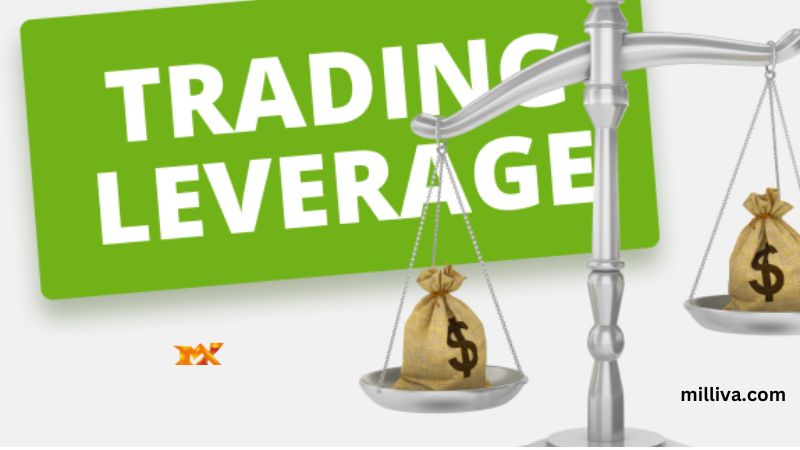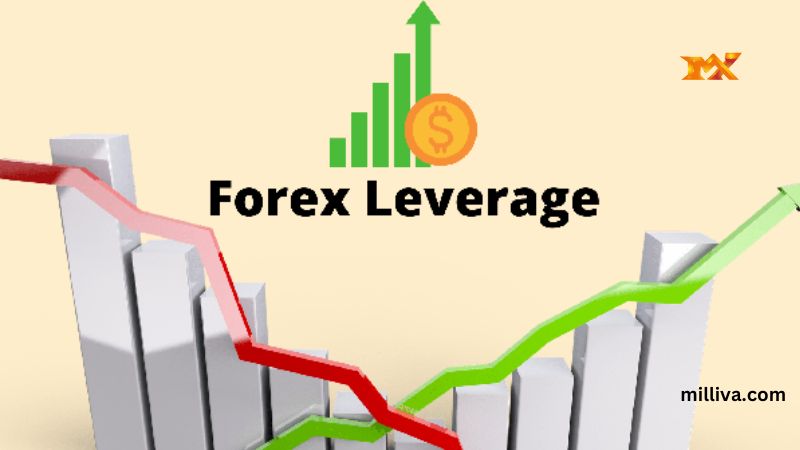Learn To Use Leverage I Your Trading

![]()
Forex Leverage is the ratio of the trader’s funds to the size of the broker’s credit. Brokerage accounts allow the use of leverage through margin trading, or in other words, brokers provide the borrowed funds to traders to increase trading position.
The leverage ratio can amplify both loss and profits. Leverage can use a small amount of capital in a trader’s accounts controlling a larger market. So the capital or the borrowed money that you invest in a currency pair is called leverage. This money differs from your minimum deposit.
Traders can trade large positions in Forex because they borrow money from the brokers. You should give a part of your profit to the borrower if you trade every dollar that you earn using this borrowed sum.
Since you have to pay interest on the leverage, you must be careful before selecting the level of leverage. Let’s see what is the optimal level of leverage for Forex traders and investors in this article.
What Does Leverage Mean In Trading?
The actual meaning of leverage in finance is to make a trade or investment with borrowed funds as your main capital outlay. So, financial leverage is the act of borrowing a sum to trade on or invest in an asset or market in the hopes of making a profit.
When trading leveraged stocks, for example, this would mean opening a position with a broker and loaning most of the positions value amount depending on the leverage ratio from the broker.
How Does Leverage Work In Forex Trading?
Leverage in Forex trading gives the investors the power to control something big with something small. Leverage in Forex trading is essentially a short term loan provided by your broker which helps you to control large positions with less capital.
For new investors, the Forex market might seem boring as the exchange rates move at a snail’s pace especially when compared to the stock market. But what makes the currency market the most liquidity and opportunity rich market in the world is leverage.
For example, imagine you expect the USD/INR rate to appreciate and want to profit from it. Simply a Leverage in Forex trading is capital that you borrow from your broker for the short term which enables you to control a big position with a relatively small capital and maximise your profits.
What Is The Best Level Of Leverage?
Everything is subjective in trading, because everyone has different goals and strategies. Your optimal level of leverage will depend on how you plan to trade and the expected movements in the market.
Breakout and scalper traders look for quick trades, which means that high leverages will be better for them. In the country for position traders lower leverage will be a better strategy. You can see how your leverage resonates with your position, goals, strategy and the expected market movement.
How To Choose The Best Leverage Level For Forex Trading?
Always trade according to your comfort level and risk which you can bear, whether you have experience in Forex trading or not. Obviously the brokers will offer you different deals and leverages, but you need to decide if you are satisfied with that before finalising anything.
Online Forex brokers give you various options to choose from. The leverage can be anywhere from 1:1 to 1:1400. Generally 1:100 leverage is considered a desirable level for Forex trading.
In 1: 100 leverage level, if you invest $1000 at leverage equal to 1:100, your total trading amount will be 100 times your investment. That is $100,000 in this case. Leverage allows small traders to trade higher volumes. It allows you to trade beyond the means.
Many new traders fall into the trap of looking for a higher leverage level, by expecting to make more profits using it. This is not an ideal practice. Higher investment leads to higher profits, at the same time it can also lead to high loss as well.
High leverage will create a problem if you don’t have enough experience in managing it. It would help you to learn how to manage leverage risk to keep debt from getting accumulated.
Is High Leverage Good In Forex Trading?
A trader’s possibility to have large leverage can be advantageous in trading, especially when the market is in the small range. The important thing is that traders do not risk a lot of money, trade on the margin because that can bring huge and fast loss.
Traders can make money in Forex without leverage, but they need to have a large trading fund. For example, if the EURUSD value is 1.21 and you want to trade without leverage, then to open a 1 lot position, you need at least $121000 to trade.
Managing Leverage Risk
we have all heard, “with great power comes greater responsibilities”. This is especially true in the case of Forex markets because of how leverage works in Forex trading. While Forex leverage is a boon when the markets are in your favour, they soon become a nightmare when the markets move against you.
But that does not mean that you should give up on Forex trading. The best way to manage high leverage risk is to deploy a stop loss on each trade. Higher leverage can lead to increased losses. However, with proper risk management, you can use leverage to expand your investment.
Leverage is nothing but borrowed money, whether you make profit or loss using it, it still needs to be repaid. Forex trading markets are seldom linear. The price movement may not be dramatic, but the chances of making profits and losses are equal.
Using a part of the investment that is trading with the entire capital is never a good option. You can avoid possible negative results by using a part of it at a time. And then use risk management tools there are many risk management tools like a stop loss order to use to your advantage. You can find such features on your trading platform.
And hold small positions, you can effectively manage the risk by holding small positions requiring less investment.

The Truth Regarding Professional Traders Concerning Leverage
It is typical for traders who are professional to conduct trade with leverages that have super low rates. You can better protect your money when you keep the leverage rate low in such cases that you make some unforeseen mistakes when trading in. This means that you will yield consistency regarding your returns.
In general, most traders who are professional tend to apply the usage of leverages with rates such as ten to one or twenty to one. There is the possibility of conducting trades with such low leverage rates, even if the broker tries to offer you higher leverage rates.
You will need to place more money in your account and be careful to conduct as few mistakes as possible. A good leverage ratio for Forex like 1:100 is just enough for the average trader to use full potential in the trading world.
Benefits And Risks Of Using Leverage
you only have to put down a fraction of the value of your trade to receive the same profit as in a conventional trade. As profits are calculated using the full value of your position, trading on margin can multiply your returns on successful trades, but also your losses on unsuccessful ones.
Leverage magnifies losses as well as profits, and because your initial outlay is comparatively smaller than conventional trades, it is easy to forget the amount of capital you are placing at risk. You won’t be able to lose more than the balance on your account, but you should always consider your trade in terms of its full value and downside potential and take steps to manage your risk.
Conclusion
Forex leverage can open a lot of possibilities for you. It allows traders with limited capital to maximise their profits. Forex leverage is customisable, you can discuss this with your broker and choose a ratio that you are comfortable with.
Never neglect the risk involved with any borrowing. You must hope for the best but prepare for the worst. Leverage has the potential to maximise both profits and losses. Always keep one thing in mind that risk management tools to keep yourself floating.

visit us on: www.milliva.com





